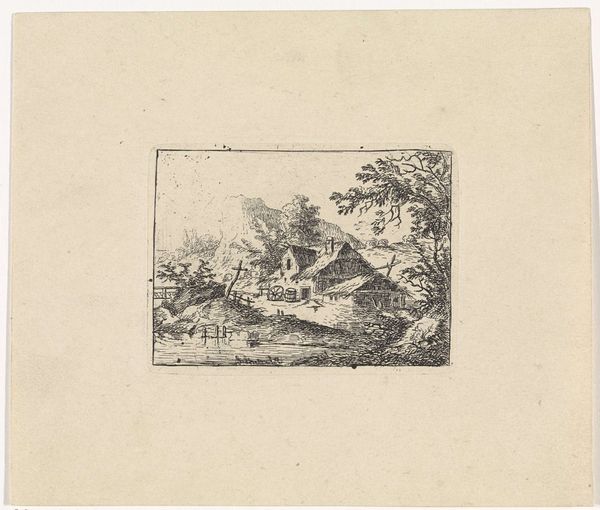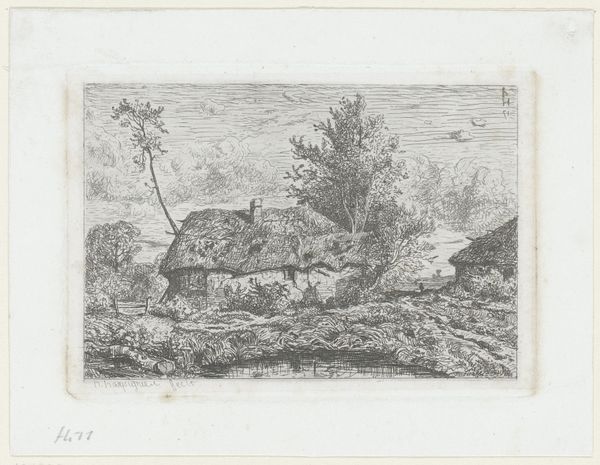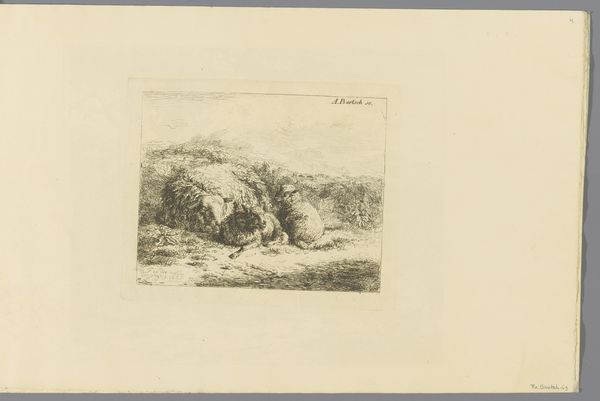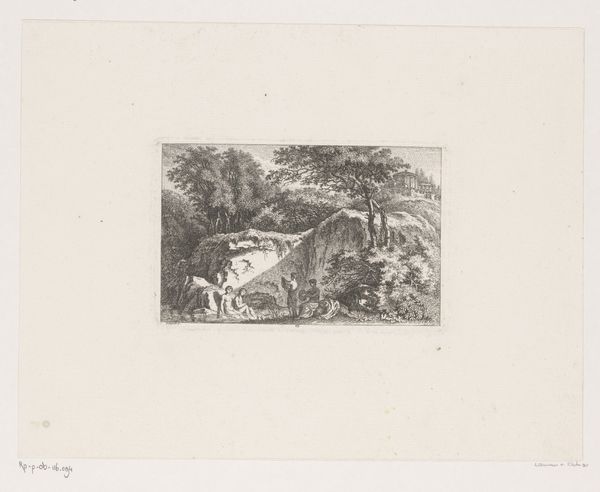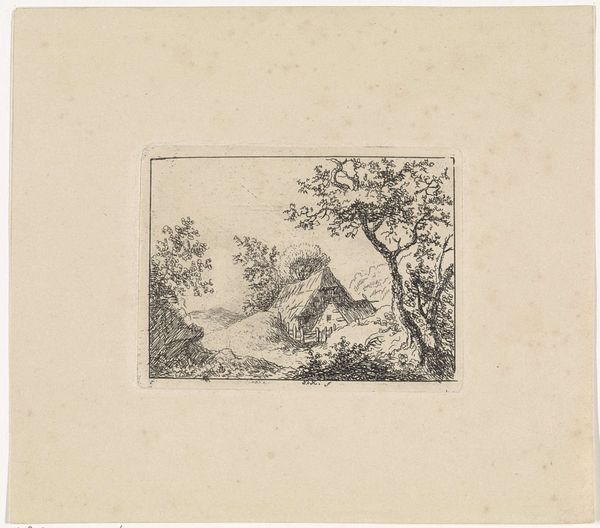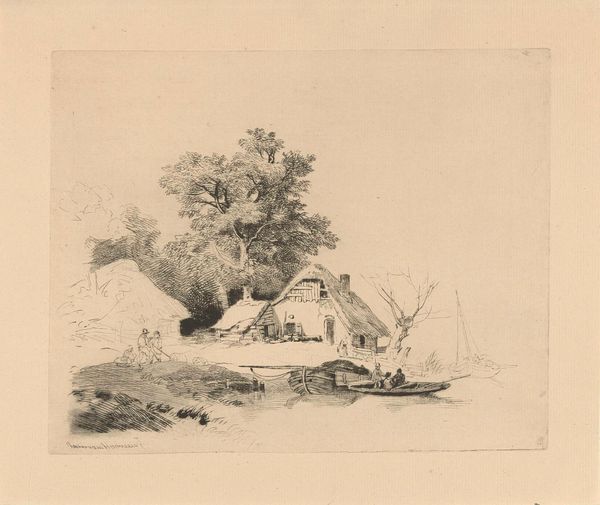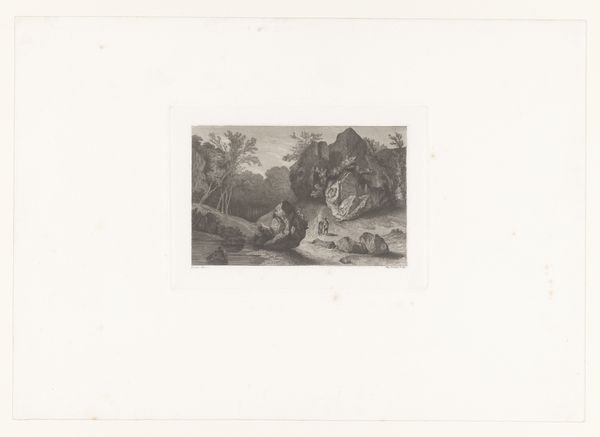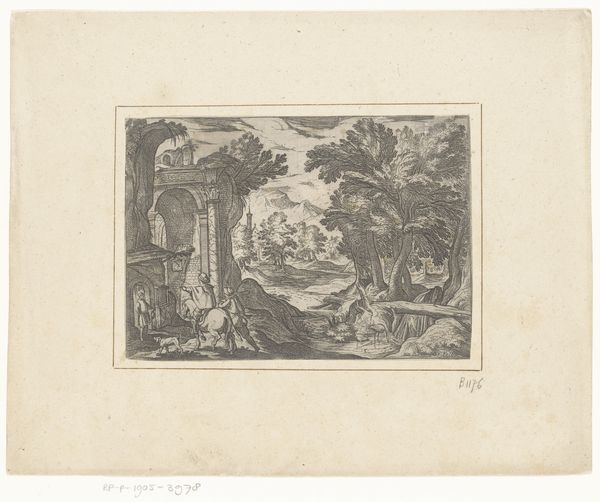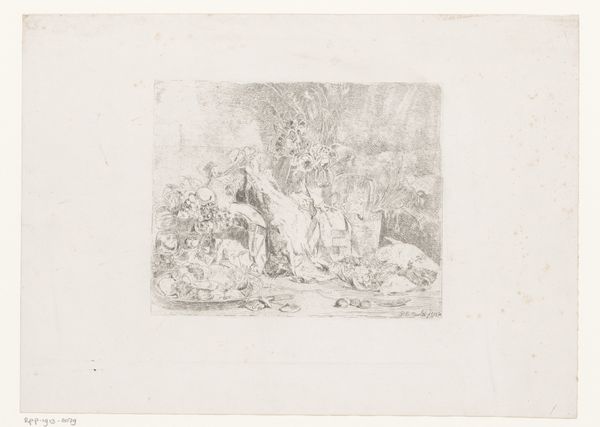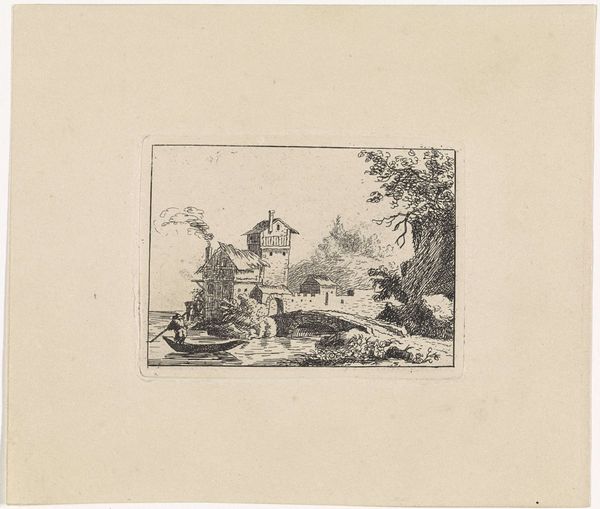
drawing, print, etching
#
drawing
#
animal
#
dutch-golden-age
# print
#
pen sketch
#
etching
#
landscape
#
etching
#
realism
Dimensions: height 132 mm, width 152 mm
Copyright: Rijks Museum: Open Domain
Editor: Here we have a print titled "Liggend schaap, bij knotwilg," or "Lying sheep by a pollard willow," thought to be from around 1657 to 1800, attributed to an anonymous artist. It's an etching, and there’s something incredibly peaceful about it. What catches your eye? Curator: I’m immediately drawn to the etcher's skill. The labor required to create the textures, especially on the sheep's wool, is remarkable. Consider the material reality: metal plate, acid, paper, ink, the tools. Each mark signifies a deliberate action, transforming raw materials into this image. What does the process tell us about 17th century printmaking and its role in art production? Editor: So you’re focusing on the *how* it was made, and what the making of it tells us? Curator: Precisely. We should also consider the cultural context. Sheep were vital to the Dutch economy. Wool production drove trade and industry. The humble sheep, then, isn't just a pastoral scene, but a reflection of the country's material wealth and the labor behind it. Think about the consumption of such images too: Who purchased these prints, and what role did they play in their lives? Editor: That connection hadn’t occurred to me. It is a valuable lens through which to examine this, given how economics has shaped so much of art history. I also now wonder about its purpose as something that perhaps promoted Dutch values and economy in subtle ways? Curator: Absolutely. By analyzing the materials and context, we can see how the artistic and the economic are interwoven in the work itself. This challenges our understanding of “high art,” emphasizing its connection to everyday life and labor. Editor: That’s fascinating. I definitely see the artwork in a new way now. Curator: Indeed. Approaching the artwork in this light, we realize that what at first looks like an isolated pastoral view really carries echoes of industrial society of that time.
Comments
No comments
Be the first to comment and join the conversation on the ultimate creative platform.
